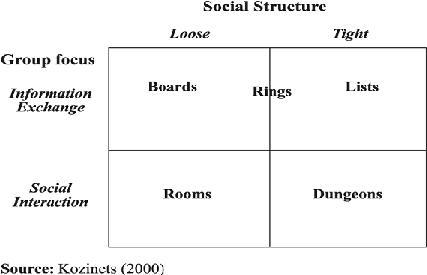 BAB II
LANDASAN TEORI
2.1 Sense of Community
Definisi – definisi
mengenai SOC dari beberapa penulis dapat dilihat pada tabel
dibawah ini.
Table 2.1: Definisi SOC
Peneliti
Definisi SOC
Sarason(1976)
The psychological sense of community as a sense of mutual
responsibility and purpose – a feeling of being a part of a group
one can depend on and contribute to. Sense of community has to do
with
the
affinity
of
community
members;
they
feel
they belong
together, are similar with each other and like one another.
McMillan
&
Chavis
(1986)
“a feeling that members have of belonging, a feeling that members
matter
to
one
another
and
to
the group, and
a
shared
faith
that
members’ needs will be met through their commitment to be
together.”
Graves (1992)
Sense of community as an environment in which people interact in a
cohesive manner, continually reflecting upon the work of the group
while always respecting the differences individual members bring to
5
|
 6
the group
Westheimer & Kahne
(1993)
Sense of community as a result of interaction and deliberation by
people brought together by similar interests and common goals.
Walsh, Mary L. (1997)
sense of Community is at the core of all efforts to strengthen and
build community. Sense of Community is an intangible component
with 4 element which are Image, Spirit, Character, and Pride, drive
with communication, inter-group relations, and networking
Definisi SOC dari McMillan dan Chavis (1986) yang sering menjadi referensi
untuk penelitian –
penelitian SOC berikutnya. Walaupun definisi –
definisi
tersebut sebenarnya tidak berbeda jauh satu dengan yang lainnya.
Table 2.2: Komponen – komponen SOC
Peneliti
Komponen – Komponen SOC
McMillan
and
Chavis (1986)
-
Membership
-
Influence
-
Integration and Fulfillment of Needs
-
Shared Emotional Connection
Nasar & Julian
(1995)
-
Casual Contacts
-
Social Support
-
Fear of Crime
|
 7
-
Territoriality
-
Community Size
Walsh, Mary
L.
(1997)
-
image
-
spirit
-
character
-
pride
Burroughs
and
Eby (1998)
-
Coworker support
-
Emotional safety
-
Sense of Belonging
-
Spiritual Bond
-
Team Orientation
Muniz, Jr and
O’Guinn (2001)
-
Consciousness of Kind
-
Ritual and Traditions
-
A Sense of Moral Responsibility
Setiap komponen –
komponen SOC dari beberapa peneliti diatas tidak ada
yang benar –
benar sama
antara peneliti satu dengan peneliti yang lainnya,
walaupun kebanyakan dari peneliti memakai definisi SOC dan komponen dari
McMillan dan Chavis (1986) sebagai kiblatnya. Tetapi
komponen –
komponen SOC tampaknya berbeda berdasarkan konteks dari penelitian itu
sendiri.
|
 8
2.2 Sense of Virtual Community
Komponen – komponen mengenai SOVC dari beberapa penulis dapat dilihat
pada tabel dibawah ini.
Table 2.3: Komponen – komponen SOVC
PENELITI
Komponen SOVC
Koh, Joon and Gul-Kim,
Young (2001)
-
Membership
-
Influence
-
Immersion
Kyröläinen,Satu
Suvikki(2001)
-
Reciprocal Improvement
-
Basic Trust for Others
-
Common Purpose & Similiarity
-
Shared History
Blanchard, Anita L. And
Markus, M. Lynne (2001)
-
Recognition of member
-
Exchange of support
-
Attachment and obligation
-
Identity (self) and identification (of others)
Relationship with specific members
Berangkat
dari
SOC,
sense
of virtual
community
adalah
SOC
dari
virtual
community.
Menurut Koh, Joon and Gul-Kim, Young (2001) sense of virtual community
mempunya 3 dimensi yaitu:
|
|
9
1. Membership: people experience feelings of belonging to their virtual
community.
2. Influence: people influence other members of their community.
3. Immersion:
people
feel
the
state
of
flow
during
virtual
community
navigation.
Dari ketiga dimensi diatas Koh, Joon and Gul-Kim, Young (2001)
mendefinisikan sense of virtual community sebagai berikut:
The sense of virtual community may be defined as the individual’s feelings of
membership, influence, and immersion toward a virtual community. The
dimensions of membership, influence, and immersion reflect, respectively, the
affective, cognitive, and behavioral aspects of virtual community members, as
does the general construct of attitude in the areas of marketing or behavioral
science.
Kyröläinen, Satu Suvikki(2001) mengemukan ada empat factor penting dalam
sense of community di virtual community. Berikut adalah empat factor
tersebut beserta komponen – komponen yang membangunnya:
1. Reciprocal Improvement
-
Social interaction, reciprocity
-
Awareness, social presence
-
Trust
-
Norms, conformity
|
|
10
2. Basic trust for others
-
Trust
-
Norms, conformity
-
Awareness, social presence
3. Common purpose, similiarity
-
Common purpose
-
Norms, conformity
4. Shared History
-
Common history
-
Awareness, social presence
Gambar berikut merupakan empat factor tersebut:
|
 11
J<
·
/
J<
Social r..tcnction, rt(iprodtv
.
Pea¢ 1e wlllno
to art.ieip.J te
Ort;nr a;.on for visitino th ;.h
lxl;.ttnct of
lono·timt urtkil>anu
Socia l cnvlroament
A.wtrentu, todtl ort:wnc:t
Ac.tivt tnviroemtnt
Reciproca
involvemen
t
"'-
Koowled<:e of other;. belno l)re:ent
Otlwlrs uet:ni 9 9ui:I1Mt
Trut
!lei
tevulbg "'eOI'Ia l
ue;.
Stf sockin9 g ; idu"
'-t
Norm;.,confotm«v
Otlu!r;. cottertbo lnu prQ9riatene;.;.
l!xped othet'S IO bef lr
Othtr;. won't mOnt t:/(1/f)
Y
'Ord;.
Own
l)livacy Is PfOitdtd
Basic
t.rust fo
others
,.,rmt, coruorrnly
Ptoglc follo'N
th t rufn
l!ld:-.-ttn<t of
rutH
j
Awnenou, ;.ocial
prt:an"
Wum tn viron.rntn t
Sbaredbo»
Common
purpose,
Common pwpon
rtorm;.,
ton!OM'lb
l!x ;.tenco olthe commonpurpo:o
Own klowltdgt
of tht comma. Pllf1!0St
11
!lmllu vatuo;..unonQ
members
St u.cllnono•
Agree lth otlu!rs
kllowltdot of found••
Comtn.Ofl
hIiOfV
kbowledge
of found1ng
.....
Knowlcd9e ol
back9round
Awtr.ntss,soda! prf:t.tnce
k.towltd.gt of numbtt of
pa.ttieipants
Gambar
2.1 The four
critical
factors
of
SOVC
Source:
Satu
Suvikki
Kyrolainen(2001)
|
|
12
Anita L. Blanchard, Anita L. and
Markus, M. Lynne (2001) menemukan
dimensi
dari sense
of
virtual
community
setelah
melakukan
penelitian
pada
sebuah Forum olah raga yaitu MSN(Multi Sport Networks). Adapun dimensi
dari sense of virtual community tersebut adalah:
1. Recognition of member
2. Exchange of support
3. Attachment and obligation
4. Identity (self) and identification (of others)
5. Relationship with specific members
2.3 Komunitas
Menurut Gusfield (1975) komunitas dibedakan menjadi dua yaitu komunitas yang
berdasarkan lokasi geografis, dan komunitas yang berdasarkan ketertarikan atau
kepentingan yang sama.
Menurut Bellah, Madsen, Sullivan, Swidler & Tipton (1985) dalam buku mereka
“Habits of The Heart” mendefinisikan komunitas sebagai sekumpulan orang yang
saling
tergantung
secara sosial,
yang
saling berpartisipasi
dalam berdiskusi
dan
membuat keputusan, dan yang saling bersama – sama melakukan kegiatan
tertentu.
Komunitas
seperti
ini
tidak
cepat terbentuk, dan hampir selalu ada
kejadian di masa lalu yang akhirnya membentuk suatu komunitas.
|
|
13
A community is a group of people who are socially interdependent, who
participate together in discussion and
decision making, and who share certain
practices that both define the community and are nurtured by it. Such a
community is not quickly formed. It almost always has a history and so is also a
community
of memory,
defined
in
part
by its
past and its
memory
of the
past.
(Bellah, Madsen, Sullivan, Swidler & Tipton, 1985, p. 333)
Menurut Preece (2002) komunitas adalah sekumpulan orang yang saling berbagi
sumber daya
yang penting,
saling memberikan bantuan sosial, dan menunjukan
suatu hubungan yang timbal balik.
Groups that share important resources, provide social support and show
reciprocity can be considered communities. (Preece, 2002)
Menurut
Schichter (1998)
komunitas
adalah social
grouping
yang
mempunyai
properti sebagai berikut:
1. shared spatial relations
2. Social conventions
3. a sense of membership and boundaries
4. an ongoing rhythm of social interaction
Dari
berbagai
penjelasan
yang
ada
tentang
komunitas
semuanya
terdiri
aspek
yang sama yaitu adanya kepentingan yang sama antar individu sehingga mereka
|
|
14
membentuk sebuah group atau komunitas atas kepentingan yang sama atau sering
disebut community of interest.
Dalam dunia marketing komunitas dapat dimanfaatkan dengan baik jika pemasar
bisa melihat dengan jeli komunitas yang ada atau bahkan membentuk komunitas
sendiri berdasar produk yang dijual, atau bahkan customer lah yang membentuk
komunitas terhadap produk yang mana mereka loyal terhadap produk tersebut.
Many
consumers
develop a
sense
of communality
with service providers whom
they
perceive
to
be
particularly
dependable, competent, and trustworthy
(Goodwin, 1996).
Adanya sebuah
kepentingan
yang
sama
baik
itu
hobi,
barang,
manusia
seperti
artist ataupun public figur lainnya maka bisa terjadi sebuah komunitas apabila
individu
yang
mempunyai
kepentingan tersebut
berkumpul
dan
saling
berinteraksi.
2.4 Virtual Community
Komunitas maya adalah bentuk baru dari sebuah komunitas dimana member dari
komunitas tersebut saling berbagi knowledge dan informasi untuk pembelajaran
dan pemecahan masalah, seperti dikutip dari:
Lechner, U., and Hummel, J. Business models and system architectures of virtual
communities: From a sociological phenomenon to peer-to-peer
|
|
15
Virtual communities are a new form
of communication whereby community
members share information and knowledge for mutual learning or problem
solving.
Ada komunitas yang bisa dilihat dan juga ada komunitas yang tidak bisa dilihat
atau
bisa kita sebut
komunitas
maya. Komunitas
maya
adalah komunitas
yang
terbentuk dalam dunia maya atau internet.
Hagel and Armstrong (1997) explain their concept of a virtual community. They
define
virtual
communities
as
computer-mediated
space where
there
is
an
integration
of
content and
communication
with
an
emphasis
on
member-
generated content.
Sebelumnya Rheingold(1993) mendefinisikan Virtual community sebagai berikut:
Social aggregations that emerge from the internet when enough people carry on
those public discussions long enough, with sufficient human feeling, to form webs
of personal relationships in cyberspace.
Menurut definisi Rheingold adanya factor waktu dan human feeling yang
menbentuk sebuah virtual communities.
Kozinets(2000)
membedakan
5
tipe
virtual
communities berdasarkan
struktur
communities tersebut sebagai berikut:
|
 16
1. boards.
These
function
as
electronic
bulletin
boards(usenets/newsgroup)
2. rings. These bring together thematically linked web pages
3. lists. These are e-mailing lists united by a common topic or interest.
4. dungeons. These are themed virtual locations in which interactions are
structured by role-playing rules(MUDs/MOOs/MUSEs)
5. chat
rooms.
These
are
unthemed
virtual
location
loosely
organized
around common interests.
Gambar berikut
memperlihatkan ke 5 tipe diatas kaitannya dengan
information
exchange dan social interaction.
Gambar 2.2 Types of Virtual Communities.Source: Kozinets(2000)
Ada
berbagai
macam
kategori
dari
komunitas
maya.
Chasel(2004)
mengkategorikan virtual communities sesuai karaktersitiknya yaitu:
1. search communities
2. education communities
|
|
17
3. trading communities
4. schedule events communities
5. community consulting firm
6. subscriber-based communities
7. e-mail based communities
8. advocacy communities
9. customer relationship marketing communities
10. merger and acquisition communities
Selain itu Turban, King, Viehland and Lee (2006) mengkategorikan virtual
communities sebagai berikut:
1. Associations Communities such as parent teacher communities
2. ethnic communities
3. gender communities
4. affinitiy portal such as hobby, vacations, political parties, etc
5. young people communities
6. mega/huge communities such as Geocities
7. Business to business communities(for trading between companies)
Teknologi merupakan salah satu
pendukung
yang
paling
penting
dalam
terbentuknya virtual communities, dahulu internet
kita
hanya
bisa
melakukan
chating
atau
email
semakin
berkembangnya waktu
fitur-fitur dari
website
juga
bertambah canggih.
Dengan adanya teknologi
yang bertambah
maju social
|
|
18
interaction yang terbentuk dari virtual communities jg akan bertambah kuat,
karena batasan tempat, waktu semakin berkurang.
the social interaction supported by technology is crucial to the success of virtual
communities (Preece, 2000, Wang et al. 2002, Garrety et al. 2004).
Based
on
the
human-computer
interaction
perspective,
researchers
noted
that
web site usability and service quality are the key factors for predicting members’
intention to use virtual communities (Preece, 2001, Kuo, 2003).
Menurut
Baym (1998)
beberapa
factor yang
membentuk
virtual
communities
antara lain yaitu:
1. External content
2. temporal structure
3. system infrastructure
4. group purpose
5. participants characteristics
these factors together influence the way the online community emerges, and the way
participants imagine themselves as members of that community. (Baym, 1998)
|